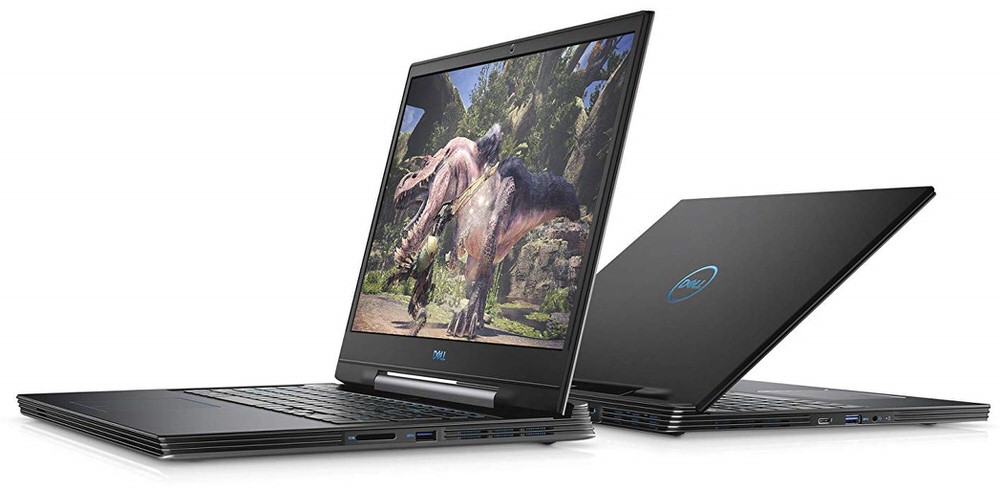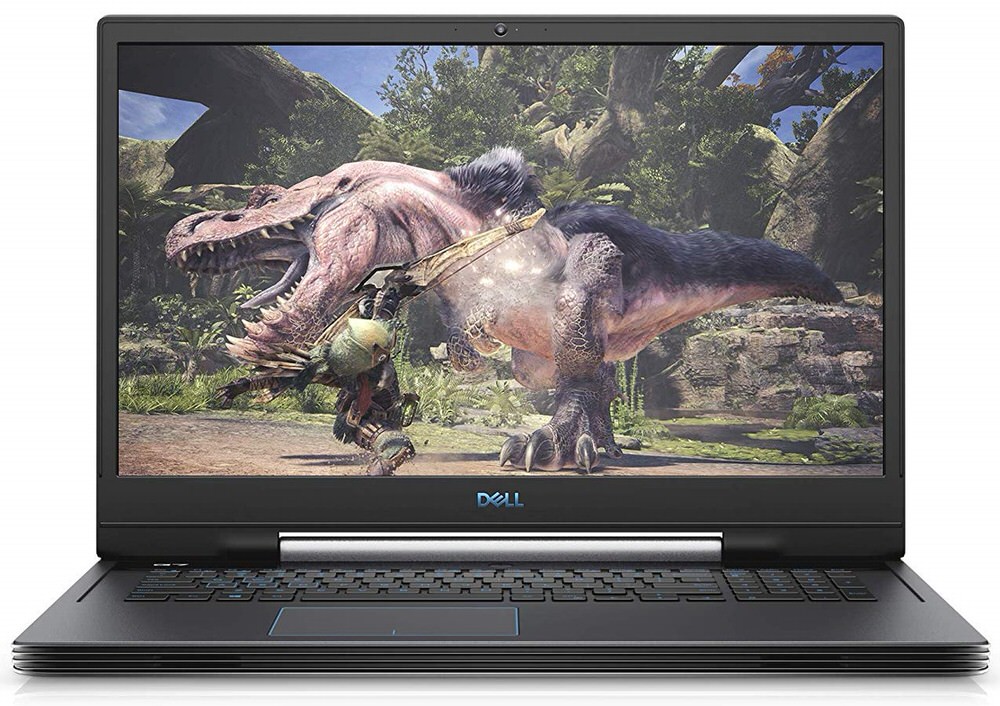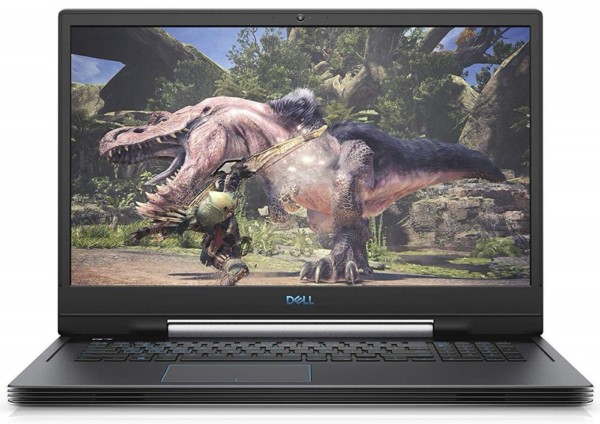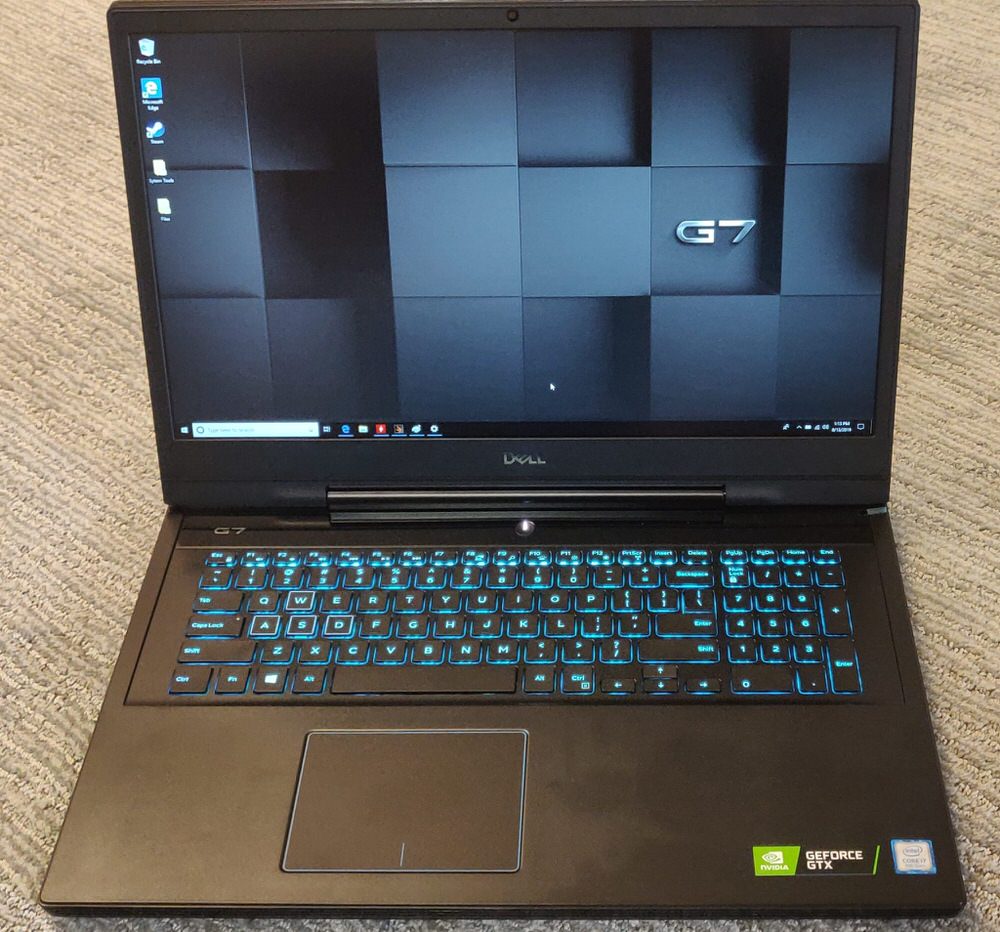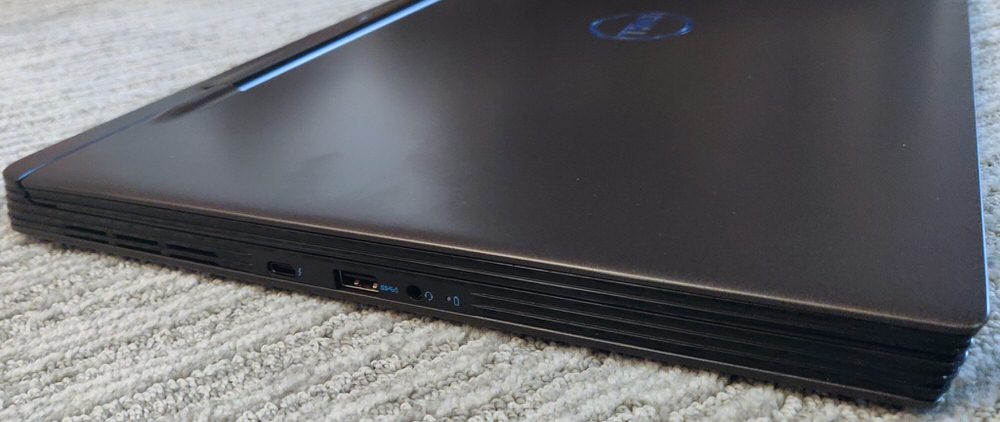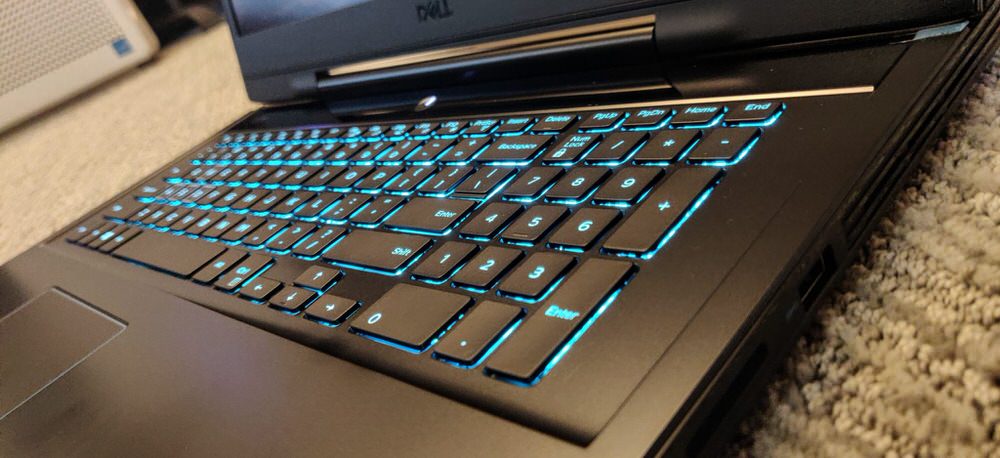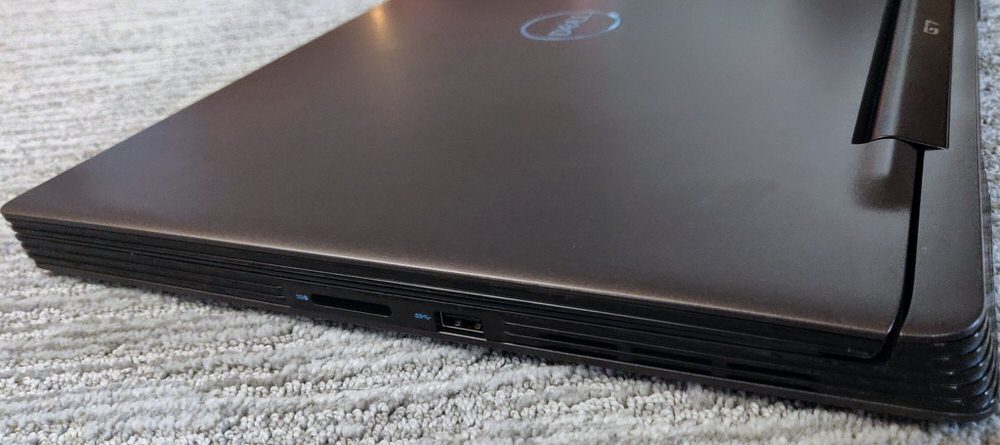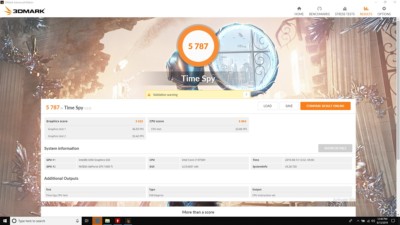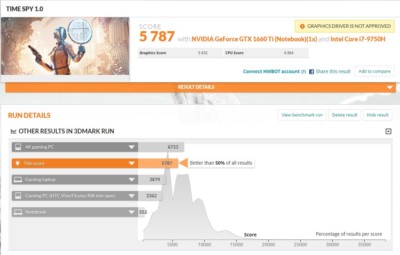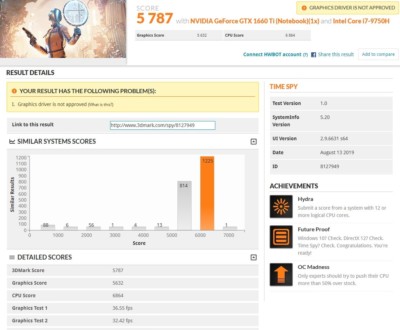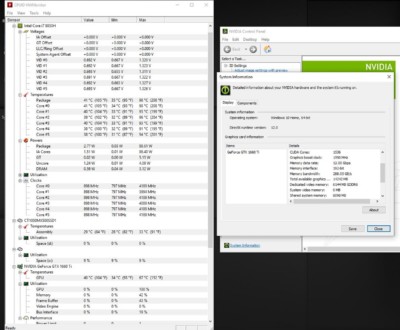Contents
Introduction
I have owned, customized, and built a lot of computers over the past 30 years, and one trend is clear: laptops have become much more desirable for consumers today than desktop PCs. Today’s computers all handle work and casual consumption very well and come in all sorts of forms and functions. Where power is still needed are hardcore gaming and professional work, such as photography, videography, and architectural drawings.
Disclosure: This product was received through Amazon Vine, an Amazon invite-only program offered to its most helpful reviewers for an honest, unbiased, unpaid opinion. Vendors cannot influence the review, neither a positive nor negative evaluation affects membership, and item’s value may be taxable income. YuenX is independent of Vine. Learn more
In A Nutshell
This Dell G7 G7790-7662GRY-PUS is an above-average gaming laptop with the speedy power to perform heavy work, packaged in a muted, sleek, metal finish. It presents excellent gaming performance for its price range, is a nice upgrade over last year’s debut model, performs well for heavy office work, but still suffers from disappointing battery life.
What’s Good? What’s Bad?
Pros
- Above-average gaming performance for the price range
- GeForce GTX 1660Ti 6GB DDR6 graphics processor can play most currently-released games at High 1080p settings near 60 FPS or higher
- Great price for a budget gaming laptop
- Bright screen (17.3″ IPS 1080p 60Hz)
- Display lid is easy to open with one hand
- Decent VR performance, though it scored perfectly on the StreamVR test
- Metal finish with less plastic used than the previous generation
- Keyboard has RGB backlighting, allowing you to change the colors (and effects) for 4 different zones using the Alienware Command Center app
- Keyboard feels great for everyday typing
- Great work laptop for those who do a lot of photo or video editing (CPU: 9th Gen Intel Core i7-9750H)
- Hard drive storage (M.2): Toshiba 512GB NVMe SSD (KXG60ZNV512G). This is a quality hard drive
- Hard drive storage (2.5″ SATA): this slot was open, and so I added a 1TB drive
- Memory: 16GB DDR4 2666MHz RAM was included (two 8GB modules), offering more than enough processing capacity for even the demanding gamer
- Sound was powerful, but not full. In Call of Duty, some bullet sounds were a bit hollow and tinny. However, with some tweaking using the Alienware Command Center app, the sound was much improved
- Sound is front firing below the front edge of the laptop
- Lots of available ports
- USB Type-C (with Thunderbolt 3)
- 3x USB-A 3.1
- DisplayPort
- HDMI 2.0
- Gigabit Ethernet
- 3.5mm audio jack
- Memory card reader (SD, SDHC, SDXC)
- Cooling system: dual-channel heat sink/fan system
- Air is taken in through the bottom rear and sides, exiting through the back
- Good web cam
- Windows 10 Home 64-bit included
Cons
- Noisy during high-performance use, though relatively quiet during less intense times
- Heavy at 7.2 lbs
- Bulky at 15.9″ x 11.7″ x 1″, though it is slightly slimmer than heavy-duty gaming laptops. However, hauling this beast around every day is less than ideal
- Below average battery life (60Wh 4-cell), making it not very suitable for travel
- During normal web browsing and basic tasks, it only lasted about 2.5-4 hours
- For a movie played on a loop, between 4-6 hours
- For gaming: don’t even try
- Bottom of the laptop got quite hot during high-performance gaming, mostly due to the Intel i7-9750H processor drawing a lot of power and producing high heat (100F+). As a result, thermal throttling could reduce the overall performance
- Trackpad could use improvement, but most gamers likely would use a mouse anyway
- Keyboard felt tight in some areas, such as the directional and Function keys
Tips/Notes
- Laptop’s build quality is fair, but the top panel flexes and depresses easily as opposed to the more rigid and dense-feeling Alienware line
- The hinge performs well and appears to last for some time
- The GeForce video card cannot be swapped out. It is integrated into the motherboard
- Although it appears there would be room to accommodate a 3rd hard drive, Dell chose not to utilize that space
Game Test
- Ghost Recon: Wildlands, Grand Theft Auto V, and Shadow of the Tomb Raider worked well at the high/highest setting
- The Division 2 struggled during the more intense scenes at the high/highest setting
Final Thoughts
Overall, the laptop is an above-average gaming one on a budget with a relatively slim, muted look. It is sleek, fairly well-built, and does not scream for attention like Dell’s premium Alienware brand. Dell made a huge compromise by including an ill-lasting battery, although most gamers are unlikely to buy laptops to be played on the go for an extended period of time. For business or casual use, this laptop is more than adequate and is capable of running VR, crunching video productions, and processing photo edits. Certainly, it is a much improved version over its first-generation predecessor.
Where To Buy
- Dell G7 G7790-7662GRY-PUS (2019) Gaming Laptop
Related Reviews
- Laptops
- Alienware m15 R7 (2022) ‘Best 15″ Gaming’
- Lenovo IdeaPad 3 (2021)
- Acer Aspire 5 (2021)
- HP Chromebook 14 (2021)
References
Read on to learn more about what CPUs, WiFi 6 (vs 5), Chromebooks, and the disk storage differences are.
What is an Intel Processor?
The CPU (processor), the “brain” of a computer, is an important piece to gauge performance. It is responsible for processing all the general calculations and instructions to carry out everything an electronic device can do. The faster it can “think”, the faster things will get done.
Intel has maintained a significant lead in the computer industry with only AMD having been its noteworthy rival for decades. AMD had actually made a significant comeback with its Ryzen product line to compete against Intel’s flagship “Core”. The numbering scheme for Intel goes like this (from lowest to highest performance): i3, i5, i7, and i9. AMD’s Ryzen series mirrors that. Essentially Intel’s Core i3 is the least expensive and targets consumers wanting a basic computer to do basic things like web browsing, office work, media consumption, and casual gaming with better battery life than the higher models. Core i7 and i9 target hardcore users who want top-notch performance.
What is WiFi 6?
The new WiFi standard is not just about speed. It can more efficiently send data to multiple devices at once (like a delivery driver stopping by multiple clients on the way to the final customer), improve battery life, and security. However, the router and devices must all support the new 802.11ax standard for the benefits to be realized.
WiFi 6 is 100% backwards compatible with WiFi 5 and older devices and as such is more future proof.
What is a Chromebook?
It is important to first and foremost understand that Chromebook is precisely that — a laptop (notebook) based on Google’s Chrome operating system (OS), software that allows you to use and interact with the hardware. It offers a minimalistic, web browser experience that is far different from Windows and MacOS, but may appear familiar to Android users.
Newer Chromebooks offer the Google Play Store from which you can download apps, games, and consume books, music, and movies — just like a Samsung smartphone or Google TV device. It also offers apps from the Google Chrome Web Store that are very limited in functionality but can enhance the web browsing experience with extensions (plugins).
Chrome OS is today’s dominant computing system used within the Education market, an area that Microsoft had been trying to challenge with its failed Windows RT and Windows S-Mode efforts. Apple, too, trails behind Google’s Chromebook platform. Unlike Windows and MacOS native programs, however, most web apps within Chrome OS cannot be used without having internet access. A subset and many Google Play Store apps can, such as Netflix and Gmail.
In Short: Chrome OS, which was launched in 2011, very much feels like an Android tablet slapped onto a laptop form factor. It does not offer a full PC/Mac experience and essentially is a (usually) low-cost/low-powered computer whose main interface is the Google Chrome web browser.
I much prefer a Windows laptop over Chrome OS for everyday computing (like the Lenovo IdeaPad 3 or Microsoft Surface Go 2), even if I had to pay a bit more for that flexibility. However, the education sector does prefer the latter like the one that powers the HP Chromebook 14.
Storage and Expansion
Installation/Upgrade: SATA/M.2 SSD/Memory
Replacing or adding a 2.5″ SATA drive, M.2 SSD, or RAM is generally hassle-free. Simply pop off the screws found at the bottom of a computer to reveal the storage/memory slots. Be sure to educate yourself about which parts to buy, as I will explain below.
Drive Differences: SATA, SSD, mSATA, M.2, NVMe
Hard disk drives (HDD) are mechanical devices whose performance was primarily based on the RPM (revolutions per minute) rating. They were generally 5400 or 7200 RPM (and beyond) — the higher the number, the faster it would usually perform. As with anything mechanical, they break down over time as the components age.
Flash-memory based Solid State Drives (SSD) were introduced in the 1990s and were VERY expensive. SSD promised resistance to physical shock, faster performance, lower heat output, and more silent operation. Even to this day, SSDs still cost more than similarly-sized HDDs.
SSD and HDD connect to your computer via multiple interfaces. Relative to most Mini PCs and Laptops, we are only concerned with the SATA and PCIe ones. SATA can connect two drive types:
- 2.5″ SATA SSD (nowadays used in most laptops and desktop PCs and is physically larger)
- mSATA and M.2 SSD (typically used in Mini PCs and laptops), each with their own connection types
Mini-SATA (mSATA) is older and slower than M.2, and the latter can also connect to the newer, significantly faster PCIe interface (those drives are known as NVMe M.2 SSD).
M.2 SSD 2230, 2242, 2260, 2280? What do they mean?
- The first two digits correspond to the width of the drive
- The last two are the length
A M.2 SSD 2280 is 22mm wide and 80mm long. This is important to know, especially with Mini PCs or Laptops where space is scarce. If you purchase a 2280 drive and the computer only has room for 2230, you would not be able to use the former.

